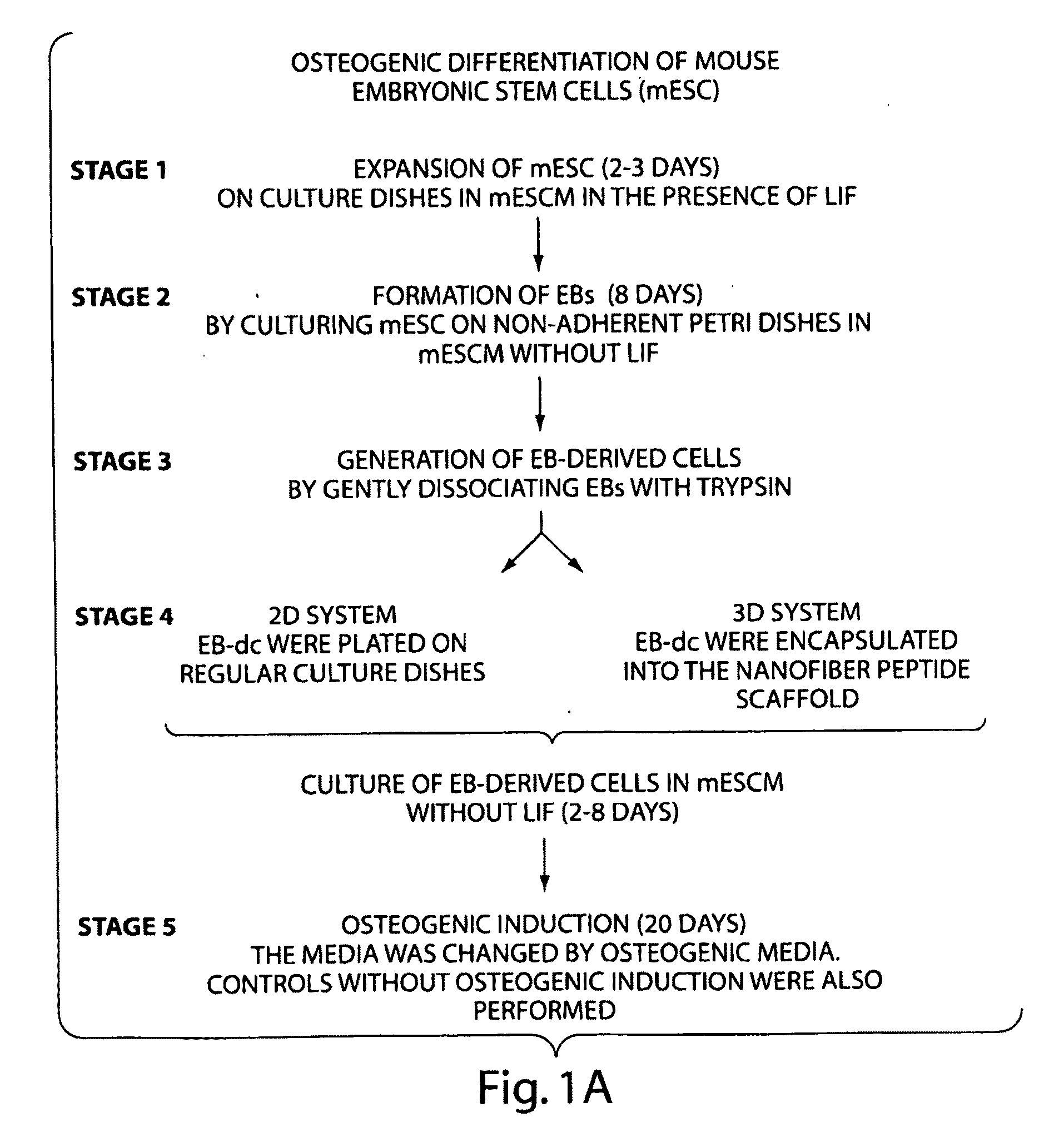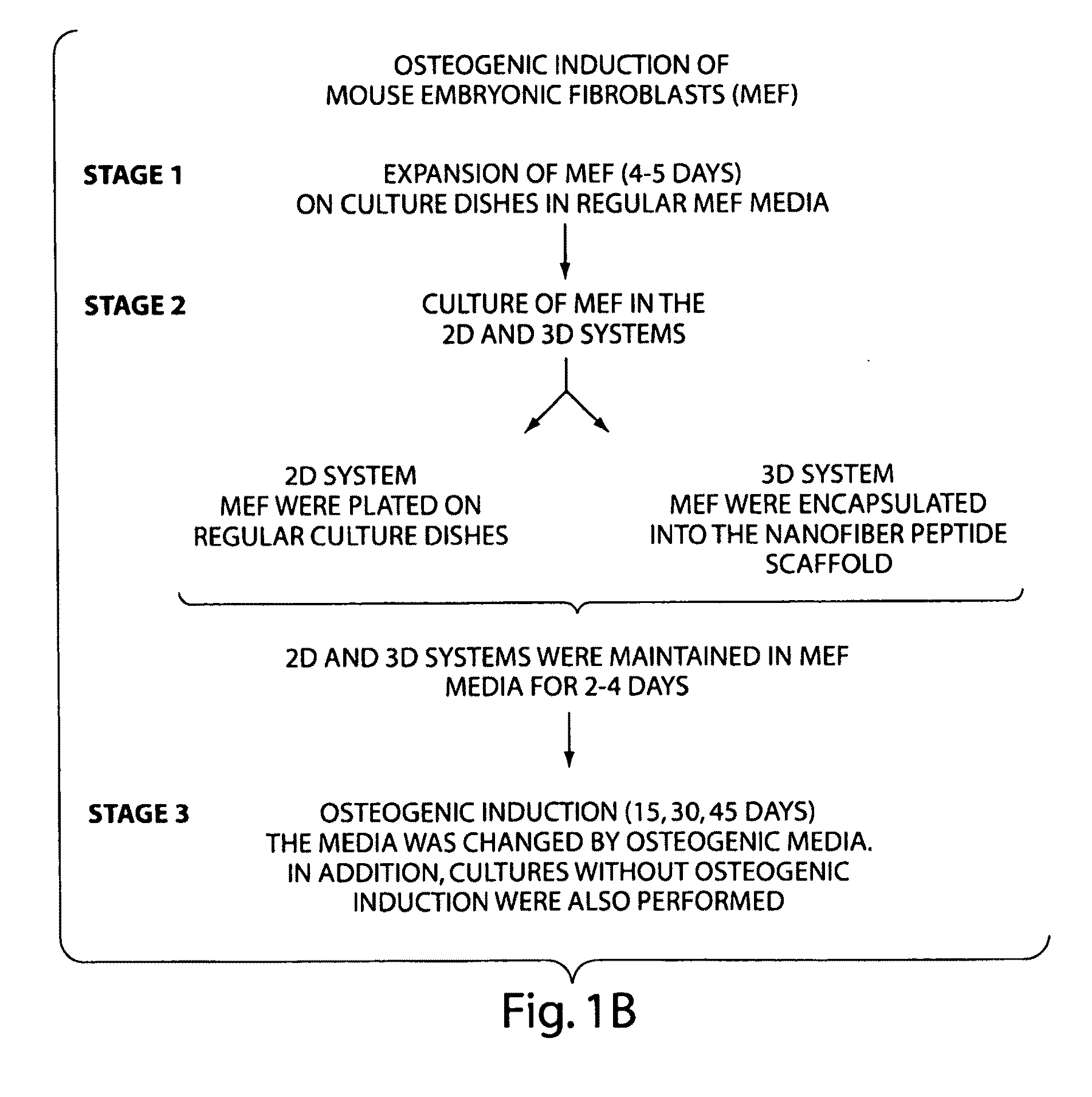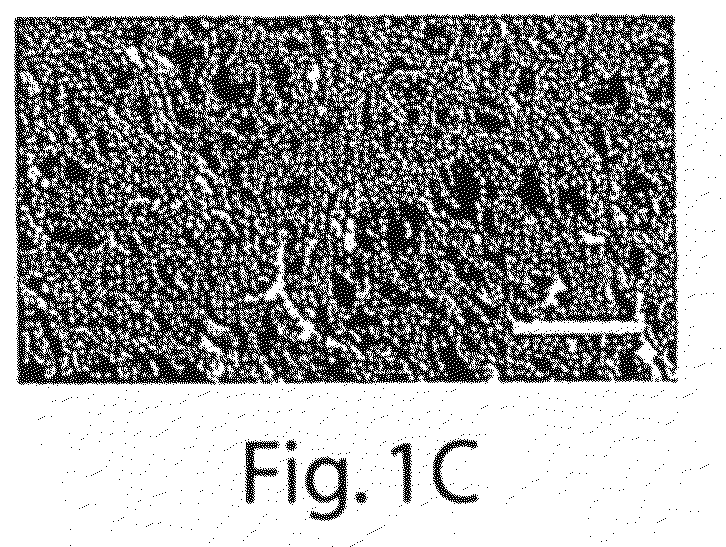Control of Cells and Cell Multipotentiality in Three Dimensional Matrices
a three-dimensional matrix and cell technology, applied in the field of cell and tissue engineering, can solve the problem that less work has been done in recreating a three-dimensional cell culture environment, and achieve the effect of promoting tissue regeneration and reducing the exposure of severed tissu
- Summary
- Abstract
- Description
- Claims
- Application Information
AI Technical Summary
Benefits of technology
Problems solved by technology
Method used
Image
Examples
example 1
Materials and Methods
[0101]Certain protocols and methods that are useful in various embodiments of the invention are now described.
[0102]Cell culture. Mouse Embryonic Fibroblasts isolated from C57BL / 6 embryos at day 14 were obtained from the ATCC and expanded in fibroblast medium (FM), which contains DMEM high glucose with 15% (v / v) FBS, 4 mM L-glutamine, 100 U / ml penicillin and 0.1 mg / ml streptomycin. Cells were cultured in various 3D and 2D environments to observe cell behavior and differentiation. One three-dimensional culture technique used is a self assembling peptide structure. This technique included the encapsulation of cells into RAD16-I peptide (BD™ PuraMatrix™ Peptide Hydrogel, BD Biosciences). This peptide had the sequence AcN-RADARADARADARADA-CONH2 (SEQ ID NO: 1).
[0103]Briefly, the procedure was as follows. A suspension of cells in 10% sucrose was mixed with an equal volume of liquid RAD16-1 peptide solution (0.5% w / v, pH 3.5 in 10% sucrose) at a final concentration of ...
example 2
[0132]This example illustrates osteogenic differentiation of mouse embryonic stem cells in 3D culture system, using techniques such as those described in Example 1. FIG. 1 illustrates a flow diagram of the differentiation protocols used in these examples. FIG. 1A is a schematic representation of the protocol used for the osteogenic induction of mouse embryonic stem cell line R1 Oct4-GFP. FIG. 1B illustrates the protocol for mouse embryonic fibroblasts, MEF. FIG. 1C is a scanning electron microscopy photograph of the self-assembling peptide nanofiber scaffold RAD16-I (PuraMatrix). The white bar is 250 nm.
[0133]In this example, the transgenic cell line ES R1 Oct4-GFP was used to obtain an embryonic cell lineage with osteogenic potential (mesoderm) by producing embryoid bodies (EB) following a classical differentiation protocol (FIG. 1A). Briefly, the embryonic cells were culture in mouse embryonic stem cell medium (mESCM) without leukemia inhibitory factor (LIF) on non-adherent Petri ...
example 3
[0139]In the experiments in this example, EB-dc in 2D and 3D systems were cultured for two different periods of time in mESCM without LIF before the osteogenic induction. The two time periods were 2 days (Experiment 1) and 8 days (Experiment 2) (FIG. 1A, Stage 4), to determine if a longer period of time at this stage would expand the population of committed cells without affecting its lineage potentiality. The osteogenic time period was set between 20 days and 22 days, as described above in Example 2.
[0140]Next, 2D and 3D osteogenic cultures (and controls) were studied by assessing formation of mineralized matrix (von Kossa staining), alkaline phosphatase activity (ALP), and two components of the extracellular matrix deposited by cells undergoing osteoblast differentiation: osteopontin (OPN) and collagen I (Coll I). These techniques have been described above in Example 1.
[0141]In the second set of experiments, it was found that 2D and 3D cultures without osteogenic induction (contro...
PUM
| Property | Measurement | Unit |
|---|---|---|
| diameter | aaaaa | aaaaa |
| diameter | aaaaa | aaaaa |
| diameter | aaaaa | aaaaa |
Abstract
Description
Claims
Application Information
 Login to View More
Login to View More - R&D
- Intellectual Property
- Life Sciences
- Materials
- Tech Scout
- Unparalleled Data Quality
- Higher Quality Content
- 60% Fewer Hallucinations
Browse by: Latest US Patents, China's latest patents, Technical Efficacy Thesaurus, Application Domain, Technology Topic, Popular Technical Reports.
© 2025 PatSnap. All rights reserved.Legal|Privacy policy|Modern Slavery Act Transparency Statement|Sitemap|About US| Contact US: help@patsnap.com



